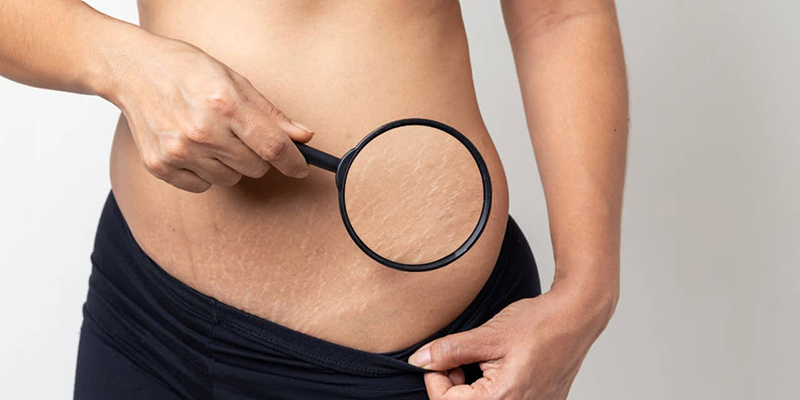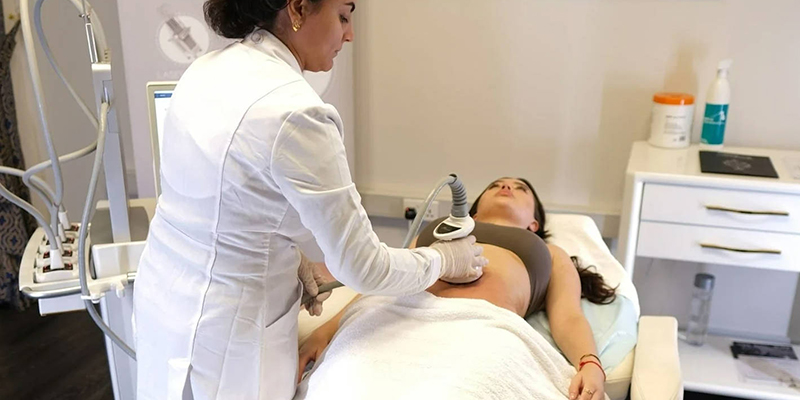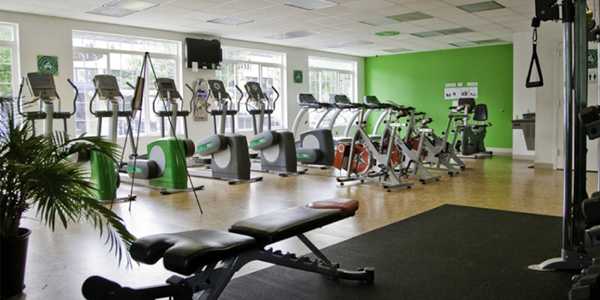How To Get Rid Of Stretch Marks: Solutions That Work
Stretch marks, or striae, are a prevalent skin condition characterized by streaks or lines that form due to rapid skin stretching. They commonly arise from factors such as pregnancy, quick weight gain, growth spurts during adolescence, and certain medical conditions, including Cushing's syndrome.
While the physical manifestation—stretching and tearing of the dermis—plays a significant role in their formation, the psychological consequences can be profound, prompting many individuals to seek comprehensive solutions. Recognizing stretch marks' underlying causes and implications is critical for effective management and fostering a more positive body image.
Stretch Marks
Stretch marks, scientifically called striae, occur when the skin is stretched swiftly, leading to tears in the dermis, the deeper layer beneath the epidermis. The dermis comprises collagen and elastic fibres that give the skin strength and pliability. When skin is stretched beyond its limit, typically due to sudden growth, pregnancy, or marked weight fluctuations, the elastic fibres break apart, resulting in visible markings on the skin's surface.

Initially, these marks appear as red or purple streaks, a reflection of the underlying blood vessels visible through the thinned outer layer of skin. They may transition to a lighter, white, or silvery colour as time passes, indicating healing. The changing colours signify various stages in the life cycle of the stretch marks.
Stretch marks are widespread, with studies revealing that about 50–90% of pregnant women develop them, alongside many adolescents and individuals experiencing significant weight changes. Genetic predispositions, hormonal levels, and specific medical conditions are crucial in determining susceptibility to these skin variations, affecting some more than others.
Prevention Strategies
Mitigating the likelihood of developing stretch marks is attainable through practical strategies to enhance skin elasticity and overall health. Here are several pivotal approaches to consider:
1. Maintain a Healthy Weight
To prevent rapid weight changes, it is essential to manage your weight consistently. Engaging in regular physical activity—aiming for at least 150 minutes of moderate aerobic exercise weekly—and adhering to a balanced diet can promote stable weight maintenance. The key is incorporating a range of fruits, vegetables, whole grains, lean proteins, and healthy fats into your daily meals. Maintaining a food diary may also assist in tracking your nutritional intake and motivating more nutritious food choices.
2. Hydrate and Nourish Your Skin
Proper hydration is critical to preserving skin elasticity, which helps minimize stretch mark formation. Aim to drink 8–10 cups of water daily to fulfil your hydration needs. Additionally, applying moisturizing lotions and oils creates a protective layer over the skin. Opt for products enriched with cocoa butter, shea butter, or hyaluronic acid, known for their hydrating properties. Massaging these products into your skin can further enhance circulation, supporting elasticity.
3. Consider Supplements
Specific vitamins and minerals play significant roles in bolstering skin health, potentially preventing the appearance of stretch marks. For instance, Vitamin E is recognized for its antioxidant properties that aid skin repair, while zinc contributes to collagen formation. Before beginning any supplementation routine, consulting a healthcare provider is advisable for personalized recommendations regarding appropriate dosages, ensuring that this aspect aligns with your overall health plan.
Treatment Options
Stretch marks are a common concern; fortunately, various treatment options exist to reduce their visibility, ranging from topical treatments to more advanced procedures.
Topical Treatments
Numerous topical creams and gels are accessible options for managing stretch marks noninvasively. Over-the-counter products often contain ingredients such as hyaluronic acid, cocoa butter, and vitamin E. While these creams can provide hydration and potentially enhance skin appearance, their effectiveness can vary from person to person.
Prescription treatments, particularly those incorporating retinoid creams, have been documented to encourage skin cell turnover and boost collagen production, reducing stretch mark visibility. Research indicates that retinoids, especially tretinoin, exhibit effectiveness in lightening striae by refining skin texture and pigmentation. However, they may also cause skin irritation and usually require several weeks before results appear.
Professional Treatments
Professional
interventions might be suitable for quicker and potentially more effective results. Laser therapy utilizes focused light to stimulate collagen production, significantly rejuvenating skin appearance. Different laser types, such as pulsed dye lasers and fractional lasers, can effectively target various stages of stretch marks, often leading to noticeable improvements after multiple sessions.

Microneedling, another innovative treatment, involves creating micro-injuries in the skin with fine needles, spurring the body’s innate healing processes. This technique enhances collagen synthesis and improves skin texture, demonstrating efficacy for minimizing stretch mark visibility. Although sessions entail minimal downtime, benefits manifest gradually over time.
Chemical peels involve applying solutions that exfoliate the upper skin layer, fostering new skin growth. While certain chemical peels may improve the appearance of minor stretch marks, the overall results depend on the specific type and depth of the peel utilized.
Surgical Options
Surgical options such as tummy tuck (abdominoplasty) might be contemplated in more significant stretch marks cases. This procedure eliminates excess skin and fat, primarily targeting stretch marks in the abdominal region. However, it's crucial to understand that abdominoplasty is generally reserved for individuals experiencing substantial weight loss or those desiring to eliminate excess skin following pregnancy. The costs of these surgical treatments can range considerably, typically between $6,000 and $15,000, depending on several factors, including location and complexity. Furthermore, recovery timelines may vary from two to six weeks, underscoring the importance of careful planning and deliberation before proceeding.
Understanding our treatment alternatives equips individuals to make well-informed decisions tailored to their conditions and preferences. Whether through topical solutions, professional treatments, or surgical methods, managing stretch marks is achievable with the right strategies.
Lifestyle Changes For Long-Term Management
Effectively managing the appearance of stretch marks necessitates conscious lifestyle modifications that bolster skin health and foster a positive self-image.
Regular Skin Care Routine
Establishing a consistent skincare routine is foundational in minimizing stretch mark visibility. Regularly exfoliating can help eliminate dead skin cells and promote smoother skin texture. Daily moisturizing with hydrating products infused with beneficial ingredients like hyaluronic acid or cocoa butter supports skin suppleness and elasticity. Aim for a regimen encompassing gentle cleansing, weekly exfoliation, and applying a nourishing moisturizer post-bathing to seal moisture effectively.
Embrace Your Body
As you venture toward smoother skin, cultivating self-acceptance remains paramount. Recognizing that stretch marks are a natural and common aspect of life empowers individuals in their skincare endeavours. Embracing your body as it exists encourages a mindset that celebrates diversity in beauty, reinforcing that perfection should not be the sole measure of attractiveness.
These lifestyle modifications enhance skin conditions and nurture self-esteem and confidence, fostering overall well-being.
By embracing these strategies and understanding the available treatment options, individuals can more effectively navigate the challenges posed by stretch marks. Consulting medical professionals can provide tailored insights, ensuring the most suitable choices for their unique circumstances.



















